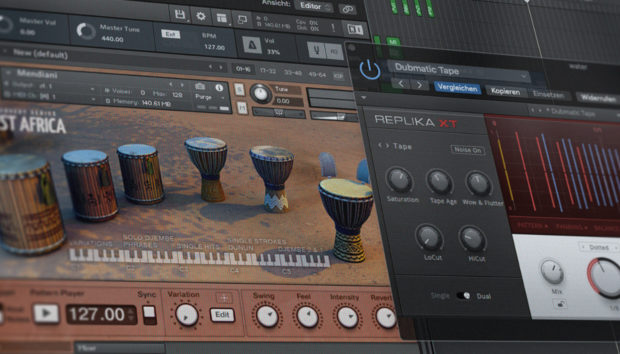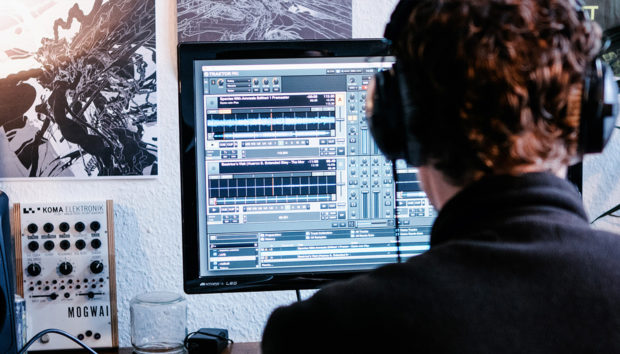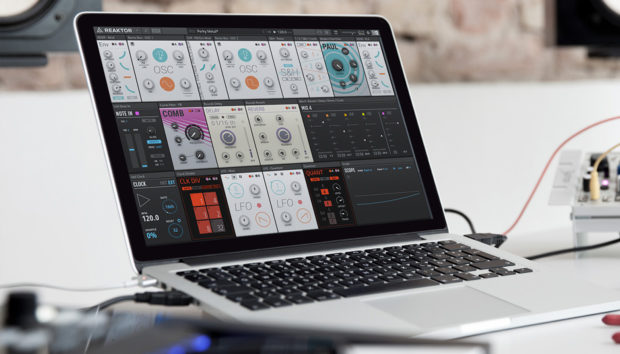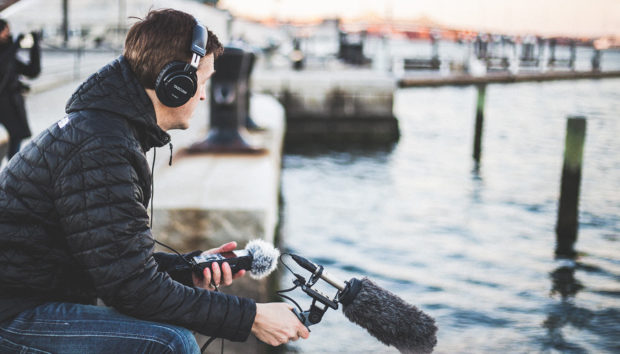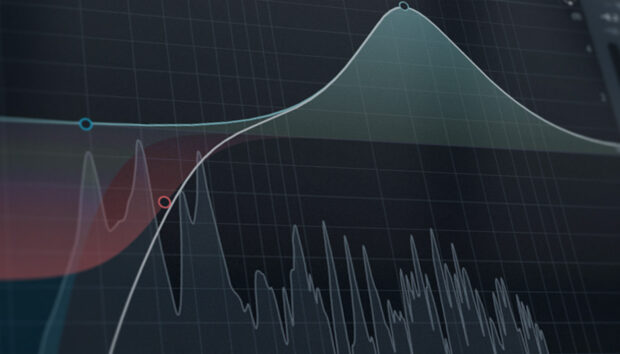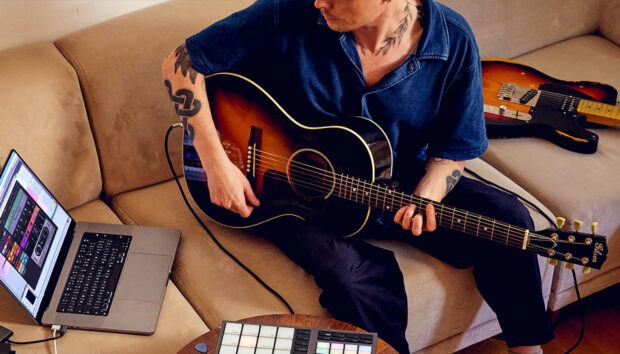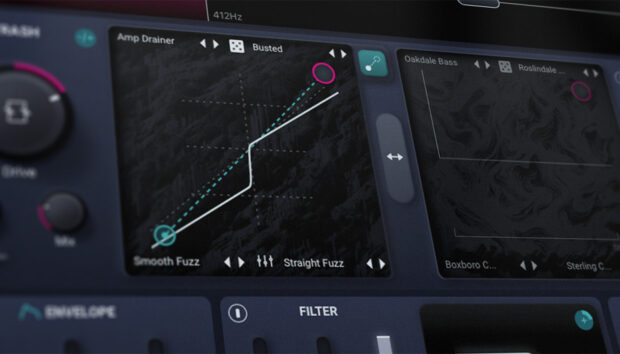
Music production today is exciting because we have access to an incredible range of sounds and libraries at our fingertips. Using samplers and VSTs, you can pull up virtually any sound ever created and incorporate it into your music.
However, we’re accustomed to hearing conventional instruments like strings, guitars, and vocals, played by real musicians who add subtle nuances through timing, velocity, and expression. When even the highest quality sample packs are used digitally without mimicking these micro-details, the result can feel off, even on a subconscious level.
No one understands this better than Towerz, a phenomenal producer rapidly rising through the dance music scene. His secret weapon is Kontakt, which he uses to replicate authentic acoustic sounds.
Jump to these sections:
- The role of samplers in electronic music
- Balancing organic texture with digital precision
- Towerz’s favorite Kontakt libraries
- Dynamic articulation explained
- Layering Kontakt for an even better result
- The biggest mistakes producers make
In this interview, we cover everything he knows about making sample-based VST libraries sound authentic. Before diving in, we recommend listening to Towerz’s music to acclimate your ears to the quality he’s about to share.
What role do samplers play in replicating the feel of acoustic instruments in electronic tracks, and does your approach to these samplers differ from that of designing synth patches?
Samplers play an important role in an electronic track for me personally. Synths have their moments but samplers come with the unique textures and artifacts that are within the sample being manipulated. It gives any production a more organic feel.
Blending synthetic and organic elements can make for a super diverse production.
Native Instruments’ Kontakt is a great sample based tool. The “Analog Strings” library is a very powerful sample based instrument that can be used to create your own unique orchestral layers.
I often run Analog Strings into granular processing to create interesting gated layers. I used this in my track “hue” that I recently released with bitbird.

Using something like this grain effect preset, we can create interesting layers to resample with a granular plugin of your choice. Using retrigger and gate effects you can create super interesting and unique sounds with a totally original feel.
I like to think of this process as discovering happy accidents.
Towerz pro tip: Being able to mimic an instrument in a real space is a skill that is invaluable as a producer these days. Practicing this is important. Even if you don’t use the sampled instrument in the final mix, it’s good to have something that feels good for the singer or instrumentalists you are working with to base their play on.

Most every granular effect plugin has a density control. That represents how often the gate is being applied per bar. Electronic producers often use this sort of function increasing or decreasing the amount of times the gate is applied using automation. This creates that very future bass feel that you often hear from artists like “Flume” and “San Holo.”
One interesting technique to try is slowly driving the rate of the gate down while driving the size of each gate length up. Giving you that true future bass variation along with a sampled feel. This is a unique take on a very common EDM processing chain.

How do you balance acoustic instruments’ organic feel with electronic dance music’s digital precision?
Music is something that is built on years of culture and nostalgia. Many times organic layers are just what a track needs to help it feel genuine and unique. We see this becoming more and more common.
Overall artists are more comfortable leaving things like room noise in the project. Room noise can actually be a driving creative force in creating a mood and scene.
Precision in dance music is important, however, I argue that emotion and expression is becoming more and more important. Technical precision is something that many artists can rely on but not balancing it with a proper amount of emotion can make the track feel empty and lifeless.
Towerz Favorite Kontakt Libraries To Try:
- Exhale: Great for subtle vocal chops. Processing is key with this plugin.
- Rev: Using reversed layers is a useful technique in production. This plugin allows you to play each note individually reversed. It can be a very inspiring creative tool.
- Substance: Very powerful bass plugin. Super useful for its brass sounds.
- Analog Strings: Have used this plugin for years. It’s a great tool for extra layers and scoring films and games.
- Signal: Has some great analog synths as well as arpeggios. Useful for retro synth-based productions.
Are there particular Kontakt libraries you recommend for recreating realistic acoustic instruments in a VST?

As mentioned before, “Analog Strings” is a powerful tool I constantly use in EDM and lo-fi productions.
Oftentimes, the problem with sample-based and synthetic strings is that they can have an uncanny valley effect on the listener. You can feel that the strings are not genuine. So I tend to use the library more subtly.
Whether it’s processing them in a way where it’s unrecognizable or simply having it sit low in the mix and cutting some of the high-end, strings and orchestral layers can greatly impact the overall mood – even if they are super low in the mix.
One of the best songwriting tools I have is the Scarbee Rickenbacker Bass. This plugin is a staple when I’m not using a real bass. I’ll even sometimes use it instead of a real bass. It has such a nice poppy tone. Every time I use it I feel like I’m writing the next Red Hot Chilli Peppers chart topper.
I used it in the song “Second Chances” by oh caroline and a few others. This library is a fantastic song starter. Pull it into your DAW and play a fifth with an octave in between (as seen below). Use this in tandem with a ‘haas effect’ on the higher notes. Make sure to check the phase. Maybe run it into simulated amps or some distortion/pedal effects, and you’ll be on your way!
Pro tip: When using plugins like the Scarbee Rickenbacker, it’s important to use subtle processing like reverbs and chorus to make the tone of the sampled instrument dynamic throughout the composition.


How do dynamics and articulation come into play when making a sampled acoustic instrument feel lifelike?
Dynamics and texture are essential to my production style. I want to embrace happy accidents. This is something that can’t be easily achieved in synthesis. The artifacts and dynamics in a particular sample make that sample unique. These elements help put the listener in a particular place and time.
The dynamics and artifacts give you the feeling that you’re in the room with the instrumentalist, making for a very provocative and immersive listening experience. I always think of artists like Frank Ocean and Afternoon Bike Ride for this sort of dynamic and natural approach.
What are some cool ways that you layer Kontakt that makes your music unique?
Layering can be a very effective tool to bridge the gap between synthetic and acoustic instrumentation. I often use the vocal layer library “Exhale” layered with my favorite wavetable synths to create unique vocal synths.
You can even freeze a sample from Exhale and drop it into a noise sample too in the wavetable synths I use. This will allow you to lay the chop in each note to create a unique, almost future bass-feeling sound.
Just make sure to adjust the pitch on the chop to a C, which is the default note input for my wavetable synths.
Towerz pro tip: When using any glitchy processing, it’s important to reset your ears frequently. One way to do this is using a pitch shifter on the master. Changing the key on the song tends to give you some instant perspective.

Layering just about any organic sample-based plugin with a synth is something I highly encourage for unique and provocative results.
What are the biggest mistakes producers make when trying to replicate acoustic instruments with samplers?

Replicating acoustic instrumentation has to be done with grace. You need to make sure that the dynamics are there and feel played. You need to tastefully disguise the layers and fit them into the room using reverb and compression. You need to ensure smooth transitions between notes and have the proper wavelength.
Generally speaking, it’s good to use most sample-based instrumentation in an additive sense, but not as the main character. That does depend on the library as well. Not all sample-based libraries are created equal. Some are better at mimicking reality than others.
Start making sampler-based instruments sound real
We’d like to extend a massive thank you to Towerz for joining us and sharing his expertise on making sampler-based acoustic instruments sound lifelike as if played by a real musician. He really hit the nail on the head, emphasizing that a lot comes down to layering, attention to detail, and using the right Kontakt libraries.
These details might seem obvious once you know they’re there, but are often overlooked by newer producers. Knowing these intricacies is crucial in turning sampler-based instruments into lifelike sounds. Hopefully, by the end of this interview, Towerz has given you a fantastic starting point to replicate these techniques and achieve similar results in your own music.
And as always, none of this would be possible without powerful tools like Kontakt 8, so be sure to check it out through the link below.
